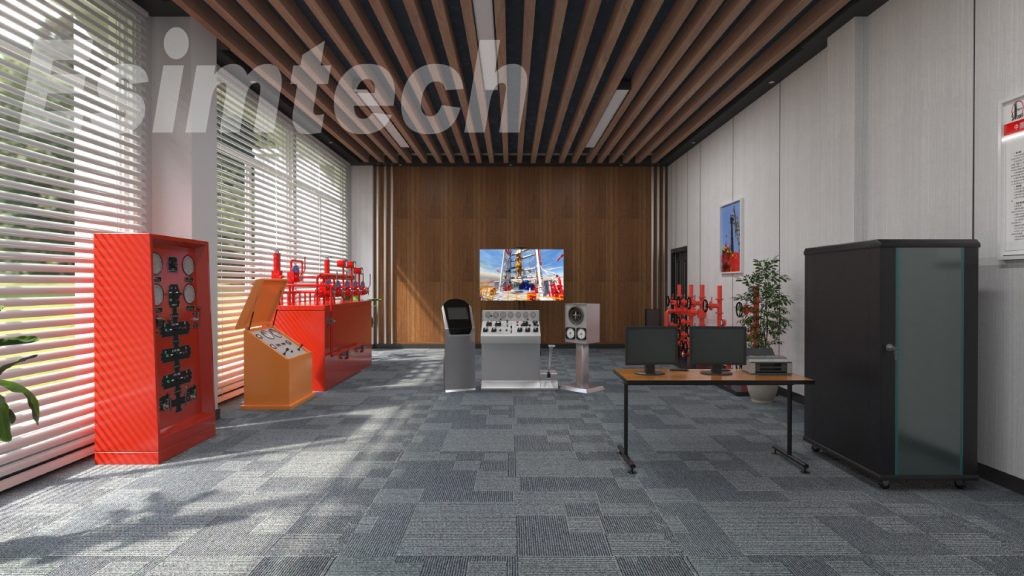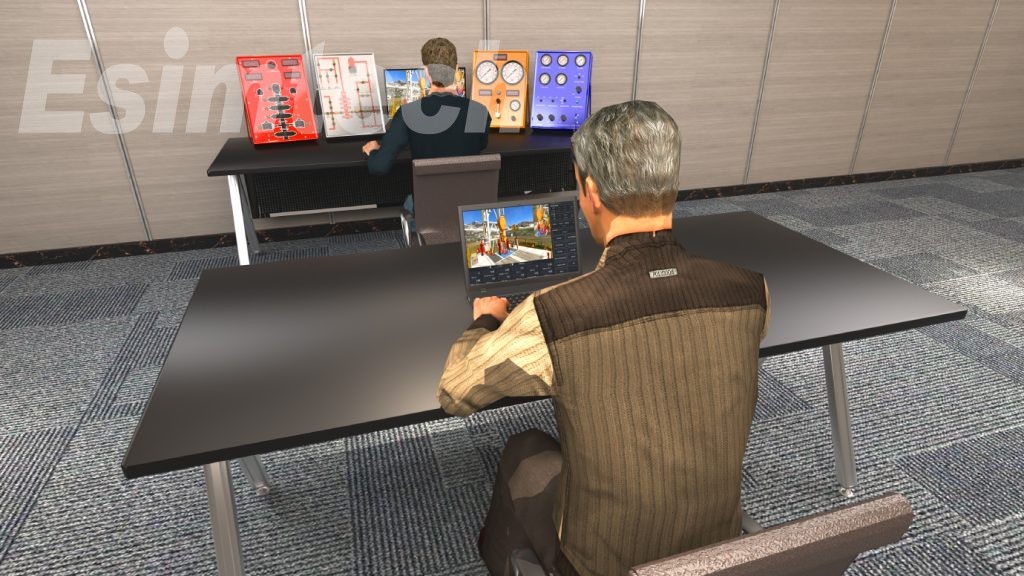Why Choose Downhole Operation Simulator for Workover in the Oil and Gas Industry
The oil and gas industry is one of the most important in the world, supplying transportation fuel and energy to industries. However, as oil and gas wells age, their output often decreases, necessitating maintenance or intervention to boost performance. This type of intervention or maintenance is referred to as a "workover" in the oil and gas sector. Workover is the process of increasing or restoring the productivity of an oil or gas well by maintenance, repair, or stimulation activities.
Oil and gas industry rely on advanced technologies such as Downhole Operation Simulator (DOS) software to undertake workover operations. DOS replicates downhole operations, allowing oil and gas engineers to test and optimize interventions before putting them into action in the field. This technology has become a must-have for oil and gas firms, assisting them in lowering the risks, costs, and downtime involved with workover operations.
In this article, we will explain the concept of workover in the oil and gas industry, why workover is required, and the advantages of employing a DOS for workover activities. We will also look at the many sorts of workover procedures and the approaches used to improve their efficiency. The goal of this paper is to provide a comprehensive understanding of workover in the oil and gas industry and the importance of downhole operation simulator for the workover.

Overview of Oil and Gas Workover
Workover Definition
Workover in the oil and gas industry refers to the process of performing maintenance, repairs, or stimulation on an existing wellbore in order to increase productivity or restore integrity. Workover operations are typically performed when a well's production is declining or mechanical difficulties require addressing.
Workover Process
A multitude of steps are involved in the workover process, including well evaluation, design, planning, execution, and evaluation. The well evaluation process entails examining the well's condition, identifying problems, and selecting the best way to remedy them. The design process entails creating a detailed plan for the workover operation, including the necessary equipment, supplies, and employees. The planning stage entails coordinating and scheduling the operation's resources. The execution step involves carrying out the workover operation, including the installation of new equipment, repairs, and maintenance. Finally, the evaluation step involves assessing the effectiveness of the workover operation and making any necessary adjustments.
Workover Types
There are three types of workover operations: remedial, completion, and recompletion. Remedial workovers are undertaken to restore the productivity of an existing wellbore that has had mechanical faults or other production challenges. Completion workovers are performed on newly drilled wells to ensure they are ready for production. Recompletion workovers entail modifying the completion design of an existing wellbore in order to increase its productivity.
Challenges of Oil and Gas Workover
Workover Difficulties and Risks
Workover operations can be dangerous and difficult due to a variety of reasons such as wellbore conditions, well pressure, equipment failure, and weather conditions. These factors can enhance the likelihood of an accident, which can result in personnel injury, equipment damage, or even death. Furthermore, workover procedures can be time-consuming and costly, resulting in lower profitability for operators.
Workover Costs and Productivity
Workover operations can be costly, particularly when dealing with complicated challenges that necessitate the use of specialized equipment and expert employees. Workover activities might incur costs such as equipment rental, personnel, and materials and supplies. Effective workover operations, on the other hand, can increase well productivity and extend the life of the well, resulting in higher profitability.
Workover Safety and Quality
Workover operations necessitate a high level of safety and quality control in order to be carried out appropriately and safely. To protect workers and equipment, operators must follow safety norms and standards. Furthermore, quality control methods must be in place to verify that the workover operation is carried out accurately and produces the required results.
Simulator Concept and Classification
Simulator technology involves the use of computer-based models to simulate real-world scenarios and predict their outcomes. In the oil and gas industry, simulators can be used to predict well performance, optimize drilling operations, and improve workover operations. Simulators can be classified into three main categories: physical simulators, mathematical simulators, and hybrid simulators.
Simulator Design and Development
Simulators are built using specialized software and hardware to imitate real-world circumstances and scenarios. Simulators employ computer languages such as Python and MATLAB, as well as hardware such as sensors, actuators, and controllers.
Applications and Benefits of Simulators
Simulators are used in the oil and gas industry for a variety of purposes, including well performance prediction, drilling optimization, and workover planning and execution. The benefits of employing simulators include lower costs, higher safety, efficiency, and better decision-making.
Downhole Operation Simulator
Components of the System and Functional Features
DOS systems are made up of numerous parts, including software, hardware, and sensors. DOS systems employ software to model the downhole environment and the behavior of fluids and materials within the wellbore. Sensors that measure pressure, temperature, and other downhole characteristics, as well as controllers that regulate equipment performance, are utilized in DOS systems. Downhole operation simulators provide the ability to simulate various wellbore scenarios, optimize workover operations, and provide real-time input on downhole conditions.
Case Studies and Effect Evaluation
DOS technology has been employed in a variety of oil and gas sector applications, including work planning and execution, failure diagnosis and management, and work optimization and improvement. DOS technology has been proved to increase the efficiency and efficacy of workover operations while also lowering costs and improving safety.

Applications of Downhole Operation Simulator in Oil and Gas Workover
Work Planning and Execution
DOS technology can be utilized to simulate multiple wellbore scenarios and optimize workover operations during workover planning and execution. Operators can detect possible issues and design more effective workover plans by mimicking the downhole environment. DOS technology can also be used to instruct workers on workover procedures and to improve their skills.
Failure Diagnosis and Handling
DOS technology can be utilized in failure diagnosis and handling to pinpoint the source of downhole problems and devise efficient solutions. Operators can discover the reason of a breakdown and develop a plan to rectify it by mimicking downhole circumstances. Furthermore, DOS technology can be used to monitor downhole conditions in real time and change equipment to alleviate problems as they emerge.
Work Optimization and Improvement
DOS technology can be used to optimize workover operations and improve well performance. By simulating different scenarios, operators can identify the most effective solutions to improve well productivity and extend the life of the well. Additionally, DOS technology can be used to monitor downhole conditions and make adjustments to equipment to optimize well performance.
Conclusion
Contributions and Research Findings
DOS technology has been proved through research to considerably improve the efficiency and efficacy of workover operations in the oil and gas industry. DOS technology has been proved to lower costs, increase safety, and boost worker productivity.
Limitations and deficiencies
One disadvantage of DOS technology is that it necessitates the use of professional staff who are familiar with the system's software and hardware. Furthermore, DOS technology can be costly to adopt, particularly for smaller businesses.
Directions for Future Development and Research
Future DOS technology research should concentrate on improving system usability and lowering expenses. Furthermore, research should concentrate on the development of new uses for DOS technology, such as wellbore stimulation and enhanced oil recovery.
- Art
- Causes
- Crafts
- Dance
- Drinks
- Film
- Fitness
- Food
- Giochi
- Gardening
- Health
- Home
- Literature
- Music
- Networking
- Altre informazioni
- Party
- Religion
- Shopping
- Sports
- Theater
- Wellness
